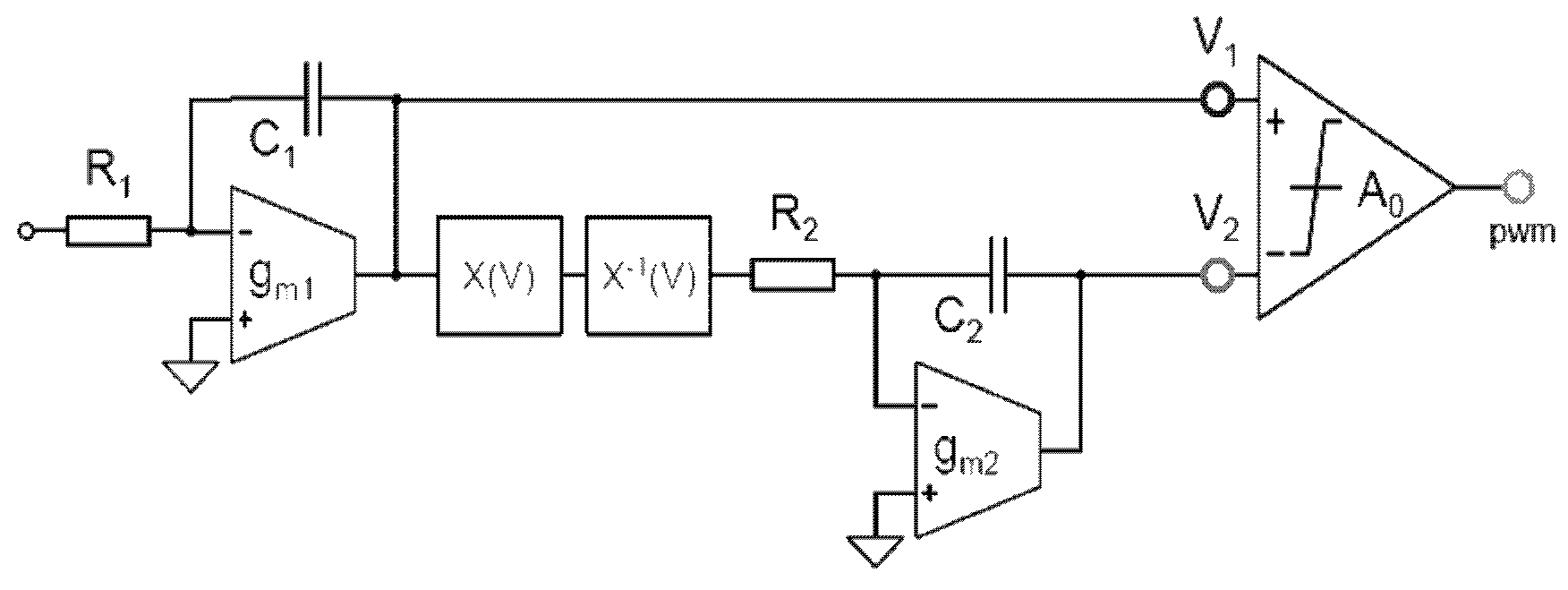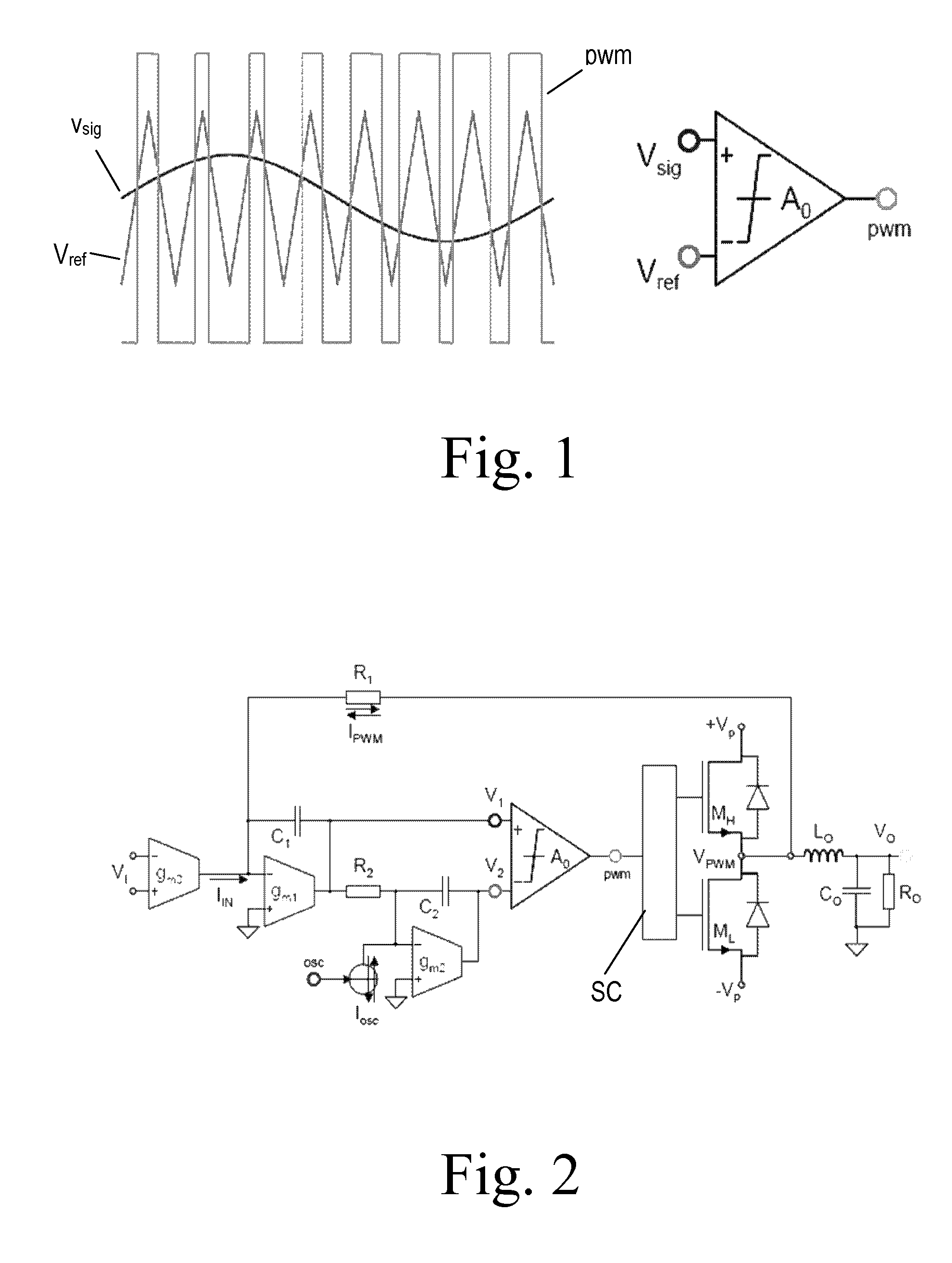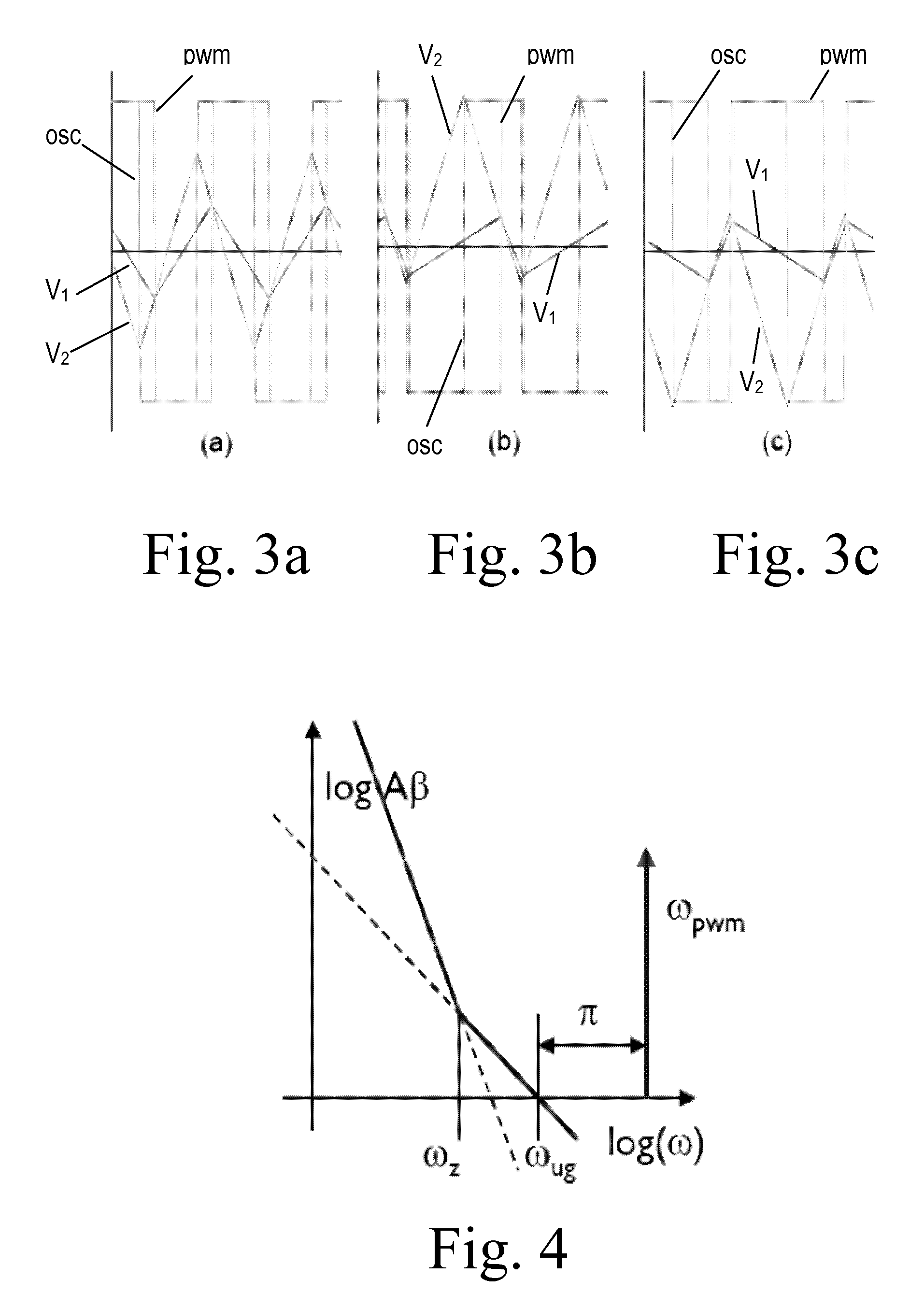Pulse width modulation circuit and class-D amplifier comprising the PWM circuit
a technology of pulse width and modulation circuit, which is applied in the direction of pulse technique, amplifier with semiconductor devices/discharge tubes, low frequency amplifiers, etc., can solve the problems of gate-oxide capacitors on the other hand having high capacitance per area but suffering from non-linearity
- Summary
- Abstract
- Description
- Claims
- Application Information
AI Technical Summary
Benefits of technology
Problems solved by technology
Method used
Image
Examples
Embodiment Construction
[0041]It will now be explained in detail how to build and use the present invention. First, reference is made to FIG. 5 showing the capacitance C of a gate capacitor of a PMOS transistor as a function of gate voltage VG with drain and source short-circuited. As can be seen from FIG. 5 the capacitance value C drops significantly near zero gate voltage. In this region the silicon underneath the gate-oxide is in depletion. For positive gate voltages VG the gate starts attracting electrons that form a so-called accumulation layer near the oxide interface. For negative voltages lower than the PMOS threshold voltage VTp an inversion layer consisting of holes is formed near the oxide interface. In both accumulation and inversion the capacitance C converges to:
[0042]Cox=W·L·ɛt-❘
[0043]where W and L are the width and length of the PMOS gate, tox is the thickness of the gate-oxide and εox is the permittivity of silicon-dioxide.
[0044]For NMOS transistors the gate capacitance looks similar but i...
PUM
 Login to View More
Login to View More Abstract
Description
Claims
Application Information
 Login to View More
Login to View More - R&D
- Intellectual Property
- Life Sciences
- Materials
- Tech Scout
- Unparalleled Data Quality
- Higher Quality Content
- 60% Fewer Hallucinations
Browse by: Latest US Patents, China's latest patents, Technical Efficacy Thesaurus, Application Domain, Technology Topic, Popular Technical Reports.
© 2025 PatSnap. All rights reserved.Legal|Privacy policy|Modern Slavery Act Transparency Statement|Sitemap|About US| Contact US: help@patsnap.com



